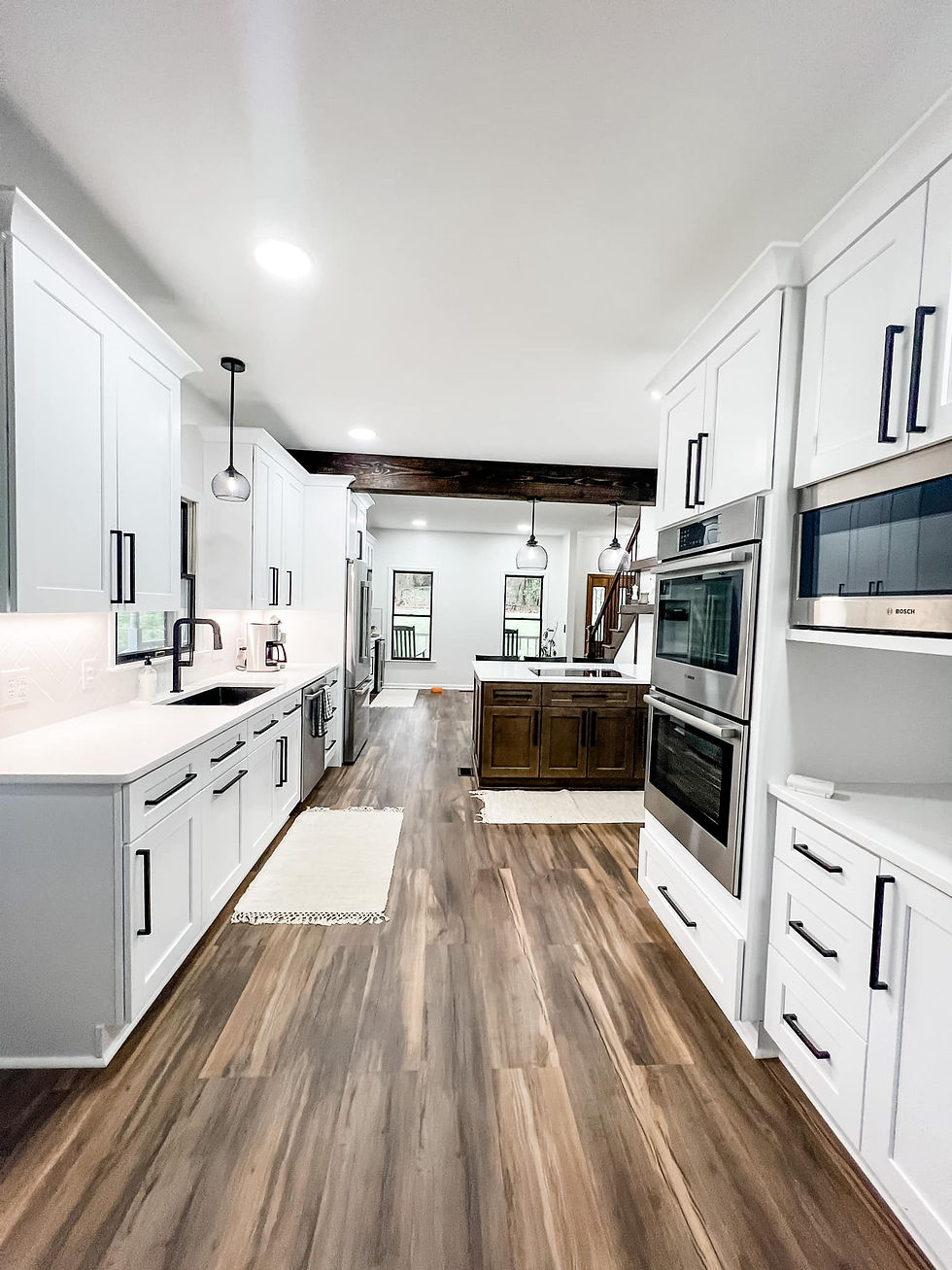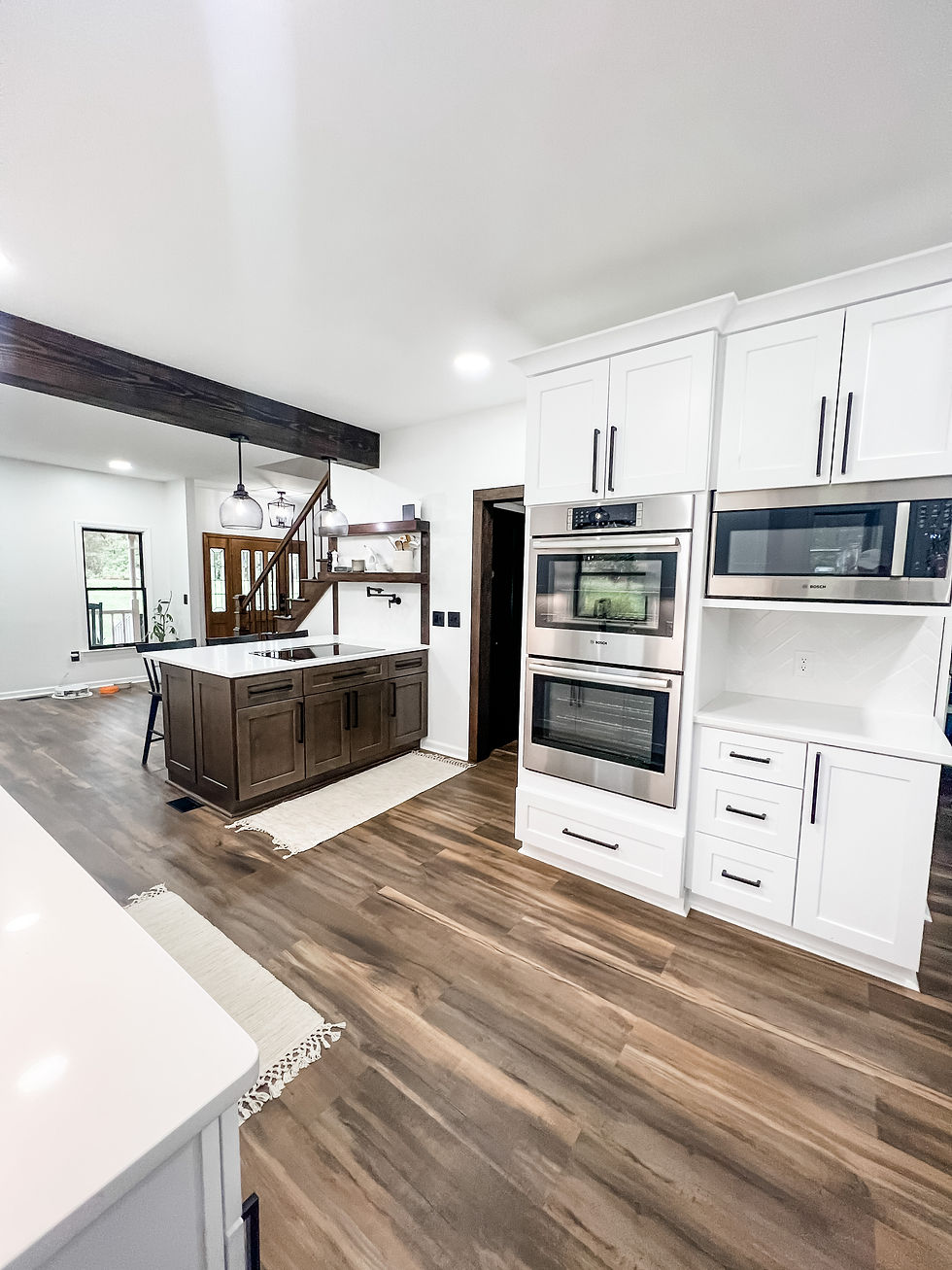Renovation in Davidson, NC for Accessibility: Creating a Home that Accommodates All
- Two Chicks

- Aug 30, 2024
- 5 min read
Home is where we should feel most comfortable, and that means ensuring it’s accessible to everyone, regardless of mobility challenges. Whether you’re planning for the future, adapting your home to meet current needs, or simply wanting to create a more inclusive environment, renovating for accessibility is a smart move that can significantly enhance the functionality and safety of your living space.
In this blog post by Two Chicks Homes, we'll explore how to remodel your home with accessibility in mind, focusing on accommodations that make life easier and more comfortable for everyone. Whether you’re considering a tub-to-shower conversion or other disability-friendly modifications, your local home renovations pros will provide tips and insights to help you create a home that truly accommodates all.

1. Understanding the Importance of Accessibility
Before diving into specific renovation ideas, it’s essential to understand why accessibility matters. An accessible home is designed to accommodate people of all abilities, ensuring that everyone can move around safely and comfortably. This is especially important for individuals with disabilities, older adults, or anyone who may face mobility challenges in the future.
By renovating with accessibility in mind, you’re not only creating a more inclusive environment but also potentially increasing the value of your home. As more people look for homes that can accommodate aging in place, accessibility features are becoming a sought-after selling point in the Davidson, NC area and all over.
2. Start with the Basics: Widening Doorways and Hallways
One of the most fundamental changes you can make in an accessibility-focused remodel is widening doorways and hallways. Standard doorways and narrow hallways can be difficult to navigate for individuals using wheelchairs, walkers, or other mobility aids. By widening these spaces, you can significantly improve the flow and functionality of your home.
Widening Doorways
Standard doorways are typically around 28 to 32 inches wide, which may not be sufficient for wheelchair access. To make your home more accessible, consider widening doorways to at least 36 inches. This allows for easy passage of wheelchairs, walkers, and other mobility aids.
Why It’s Important: Wider doorways eliminate barriers and make it easier for individuals with mobility challenges to move from room to room. This simple accommodation can drastically improve the overall accessibility of your home.
Expanding Hallways
In addition to widening doorways, consider expanding hallways to at least 42 inches in width. This provides ample space for safe and comfortable movement, especially in homes with multiple occupants or frequent visitors.
Why It’s Important: Wider hallways reduce the risk of collisions and allow for easier navigation, particularly in homes where wheelchairs or walkers are used. It also provides a more open and inviting feel to your living space.

3. Focus on Bathroom Accessibility: Tub-to-Shower Conversions
Bathrooms can be one of the most challenging areas of the home for individuals with mobility issues. A tub-to-shower conversion is one of the most effective ways to make your bathroom more accessible while also adding a modern touch to your home.
Tub-to-Shower Conversion
Traditional bathtubs can be difficult and dangerous for individuals with mobility challenges to navigate. Converting a tub into a walk-in shower eliminates the need to step over a high tub wall, reducing the risk of slips and falls. If you still want a tub in your bathroom, reach out to Two Chicks homes and let's see if we can make it work! Many of our home renovations near Davidson, NC include updated bathrooms with a soaking tub AND a shower stall!
Why It’s Important: A tub-to-shower conversion provides safer, easier access to bathing facilities, which is crucial for individuals with limited mobility. Walk-in showers can also be equipped with grab bars, non-slip flooring, and seating to further enhance safety and comfort.
Installing Grab Bars and Handrails
In addition to a tub-to-shower conversion, installing grab bars and handrails in your bathroom is essential for accessibility. These features provide additional support and stability, making it easier to move around the bathroom safely.
Why It’s Important: Grab bars and handrails are critical for preventing falls and providing support in areas where wet surfaces can be slippery. They’re a simple yet effective way to make your bathroom more accessible and secure.

4. Kitchen Modifications for Accessibility
The kitchen is the heart of the home, and it should be a space where everyone can cook, eat, and enjoy time together. Making accessibility-focused modifications in your kitchen can significantly enhance its functionality for all family members.
Lowering Countertops and Cabinets
Standard kitchen countertops and cabinets may be too high for individuals in wheelchairs or those with limited reach. By lowering countertops and cabinets, you make it easier for everyone to access and use the kitchen.
Why It’s Important: Lowered countertops and cabinets allow individuals with mobility challenges to participate in meal preparation and other kitchen activities independently, promoting a sense of autonomy and inclusion.
Installing Pull-Out Shelves and Drawers
Pull-out shelves and drawers are another excellent modification for an accessible kitchen. These features make it easier to reach items stored in cabinets, reducing the need to bend or stretch.
Why It’s Important: Pull-out shelves and drawers enhance the usability of your kitchen by providing easy access to stored items. They’re particularly beneficial for individuals with limited mobility or strength.
5. Make Entryways Accessible
Entryways are the first point of contact with your home, and they should be welcoming and accessible to all. Making modifications to your home’s entryways can significantly improve accessibility and safety.
Adding Ramps and Stairlifts
If your home has steps leading to the front door, consider adding a ramp or stairlift to make the entryway accessible. Ramps provide a gentle incline for wheelchair users, while stairlifts can help individuals who have difficulty navigating stairs.
Why It’s Important: Accessible entryways ensure that everyone can enter and exit your home safely and comfortably. This is especially important for individuals who use wheelchairs, walkers, or have difficulty with stairs.
Installing Automatic Door Openers
Automatic door openers are another great addition to an accessible home. These devices allow doors to open with the push of a button, making it easier for individuals with limited mobility to enter and exit the home.
Why It’s Important: Automatic door openers enhance independence and ease of access for individuals with mobility challenges. They’re a practical and convenient feature that adds to the overall accessibility of your home.
6. Lighting and Electrical Considerations
Lighting and electrical modifications are often overlooked in accessibility renovations, but they’re essential for creating a safe and functional living space.
Installing Motion-Sensor Lighting
Motion-sensor lighting is a smart addition to any accessible home. These lights automatically turn on when someone enters a room, providing immediate illumination and reducing the risk of falls.
Why It’s Important: Good lighting is critical for safety, especially for individuals with vision impairments or mobility challenges. Motion-sensor lighting provides instant visibility without the need to fumble for a switch.
Lowering Light Switches and Electrical Outlets
Standard light switches and electrical outlets may be difficult to reach for individuals in wheelchairs or those with limited mobility. Lowering these fixtures makes them more accessible and easier to use.
Why It’s Important: Accessible light switches and outlets promote independence and ease of use. By making these simple modifications, you can enhance the overall functionality of your home for all occupants.

Conclusion: Renovating a Home in Davidson, NC That Truly Accommodates All
Renovating for accessibility is about more than just making a few changes—it’s about creating a home that’s safe, comfortable, and welcoming for everyone. Whether you’re planning a tub-to-shower conversion, widening doorways, or installing ramps, these accommodations can significantly enhance the quality of life for individuals with mobility challenges.
At Two Chicks Homes in Davidson, NC, we’re dedicated to helping you create a home that accommodates all your needs. With our expertise in accessibility-focused remodeling and our commitment to quality craftsmanship and exceptional customer service, we’re here to make your home renovation project a success.




Comments